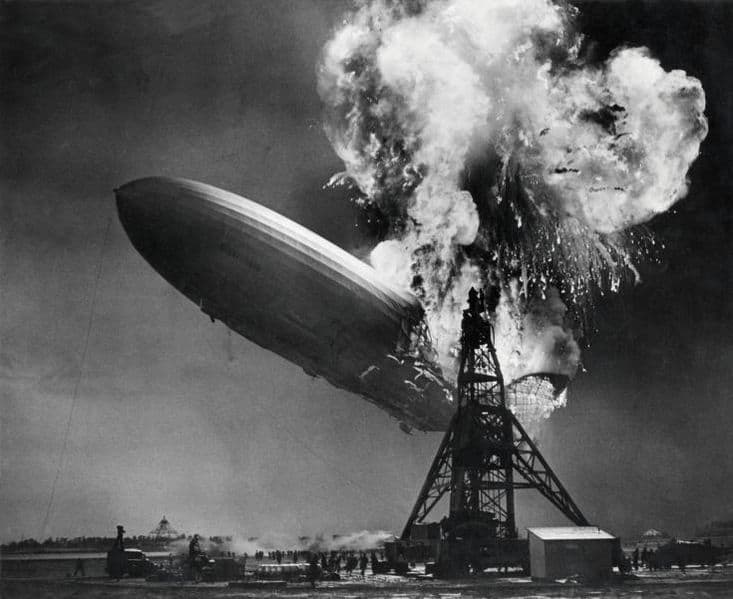
ADVERTISEMENT - CONTINUE READING BELOW
16. The Hindenburg disaster became an iconic moment of 20th-century history, with 36 people dying, most probably, due to the inadequate design of the famed airship
The LZ 129 Hindenburg was a German commercial passenger-zeppelin, operating from March 1936 until its fatal destruction on May 6, 1937, at Lakehurst Naval Air Station, New Jersey. During an attempt to dock with its mooring mast, at 7:25 pm the airship caught fire mid-air. Quickly engulfing the rear of the Hindenburg the vessel imploded and its two tanks detonated, sending the airship collapsing to the ground; the entire episode lasted between just 32 and 37 seconds. Continuing to burn for several hours, of the 97 people aboard, 36 passengers and 61 crewmen, 35 were killed in addition to one ground worker.
The precise cause of the disaster is uncertain, with dramatic theories of sabotage and lightning strikes abundant; far more likely, however, was that the Hindenburg was brought down by a static spark. In order to make up for a delay in its transatlantic flight, the Hindenburg flew through an area of high humidity and electrical charge. Due to the flawed design of the airship’s outer skin, atop which the fire is believed to have started, electricity was not evenly distributed throughout the Hindenburg. Although the mooring lines grounded the frame, the skin was not so, and consequently, upon contact with the metal moorings, the hydrogen ignited.

